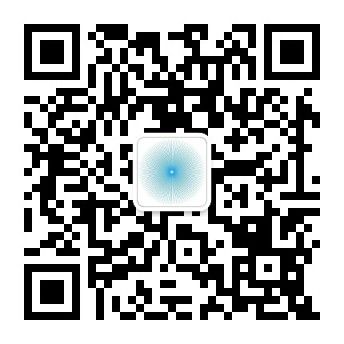Communication
Open Day 2025 | An opportunity to discover POLI.design’s Specializing Masters and Advanced Training Courses

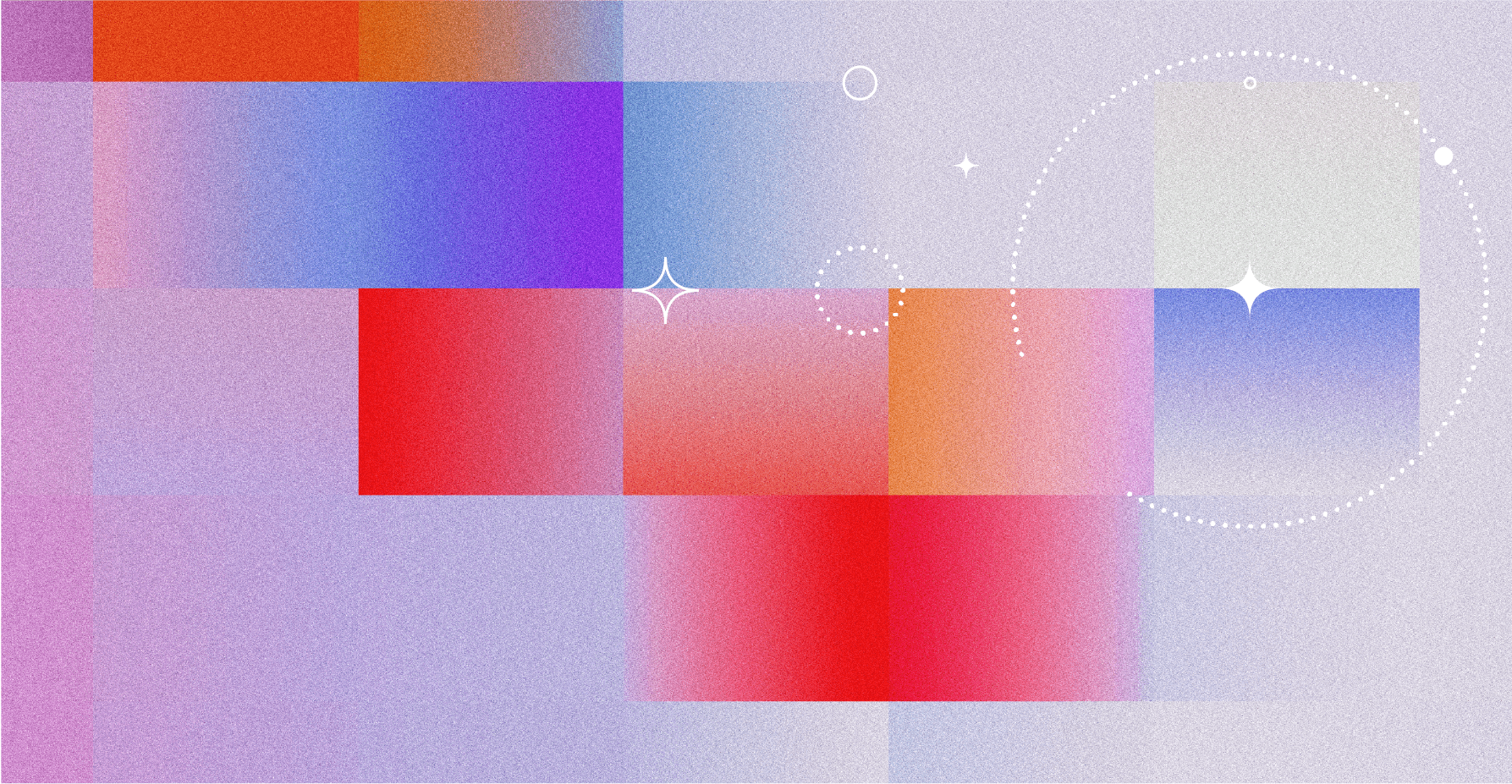
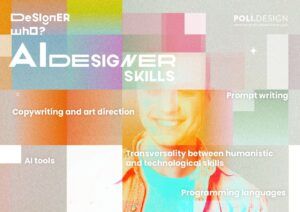
WHO THEY ARE
The AI and Prompt Designer is a highly emerging and cross-disciplinary expert who engages with Generative AI tools. Their aims are: to “humanize” AI technologies in order to integrate them optimally within processes and systems; to obtain relevant outputs such as concepts, texts, or images.
#writing #visualculture #disruptivetechnologies #artificialintelligence
WHAT THEY DO
SKILLS
Prompt writing, copywriting and art direction, transversality between humanistic and technological skills, programming languages, AI tools.
HOW THEY OPERATE TODAY
The role of AI Designer is not yet specific. Today, Graphic Designers, Copywriters (who design and write prompts), and Strategic Designers (who integrate AI systems into IT departments) manage it.
HOW THEY WILL CHANGE IN FIVE YEARS
In the future, the AI Designer will become a specific expert, primarily working in ICT and Public Administration. In addition, they will become increasingly common in creative sectors related to design.
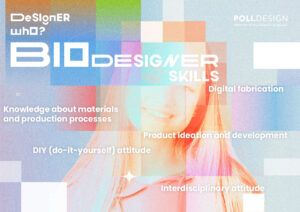
WHO THEY ARE
The Biodesigner is an emerging professional in the Product Design field. They have a transdisciplinary background ranging from Design to Synthetic Biology. In devising products and materials, they use living organisms such as insects, algae, bacteria, and fungi.
#design #biology #engineering #sustainableinnovation #circulareconomy
WHAT THEY DO
SKILLS
Product ideation and development, knowledge about materials and production processes, DIY (do-it-yourself) attitude, digital fabrication, interdisciplinary attitude.
HOW THEY OPERATE TODAY
Biodesigners are pioneers who often carry out independent practices in their studios or labs (e.g., Fernando Laposse). Sometimes, they found or led start-ups or independent projects to address the market needs (e.g., Krill Design and Mogu).
HOW THEY WILL CHANGE IN FIVE YEARS
In a few years, Biodesigners will become an asset to companies and organizations. As consultants and advisors, they will suggest strategies for developing new products and materials. Additionally, they will review “bio-informed” guidelines to lead projects.
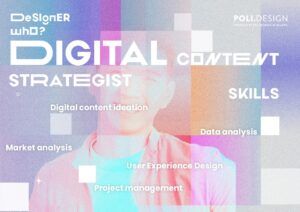
WHO THEY ARE
The Digital Content Strategist has an established role in marketing and communication. They conceive and define effective digital strategies to maximize user and/or stakeholder engagement. Additionally, they design consistent experiences throughout the customer journey across all digital channels.
#marketing #communicationstrategies #SEO #multimediacontent
WHAT THEY DO
SKILLS
Digital content ideation, market analysis, data analysis, User Experience Design, project management.
HOW THEY OPERATE TODAY
They work closely with marketing and communication teams. Depending on the project, they coordinate a team of specialized figures (e.g., copywriters, social media managers, SEO content strategists).
HOW THEY WILL CHANGE IN FIVE YEARS
In the future, Digital Content Strategists will become sought-after figures in sectors seemingly unrelated to communication and marketing. For instance, start-ups and app companies have recently designed digital strategies to ensure physical and mental well-being.
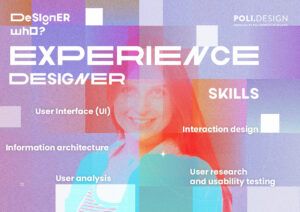
WHO THEY ARE
Experience Designers are multidisciplinary professionals who develop meaningful experiences related to physical products, digital interfaces, services, and virtual reality. They focus on multisensory elements to make spaces and services more accessible.
#design #interaction #usability #multisensoriality
WHAT THEY DO
SKILLS
User Interface (UI), information architecture, interaction design, user research, and usability testing.
HOW THEY OPERATE TODAY
Experience Designers work for large companies in the digital and technology sectors. In the healthcare area, they collaborate with clinicians, patients, and consumers to develop and improve devices, systems, and processes (e.g., Philips Experience Design). To a lesser extent, they work in the retail field, improving customer experiences both online and in physical stores.
HOW THEY WILL CHANGE IN FIVE YEARS
Experience Designers will continue to work in established sectors and will also enter new ones, such as Public Administration. They will operate side by side with Service Designers.
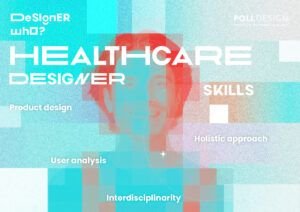
WHO THEY ARE
The Healthcare Designer is a professional who addresses the needs of a society where the average life expectancy is rising and the attention to physical and mental well-being is growing. Their goal is to design products, spaces, and/or services related to the medical field and digital care, focusing on people’s experience and solving specific problems.
#health #digitalcare #accessibility
WHAT THEY DO
SKILLS
Product design, holistic approach, user analysis, interdisciplinarity
HOW THEY OPERATE TODAY
Today, Healthcare Designers primarily work in tech companies, designing integrated products like wearable devices and prosthetics. They also collaborate with hospitals to reshape spaces by focusing on materials, colors, and finishes.
HOW THEY WILL CHANGE IN FIVE YEARS
In the near future, healthcare designers will be part of multidisciplinary teams that include clinical staff and other designers. They will play a crucial role in driving systemic improvements in healthcare processes, environments, and therapeutic experiences.
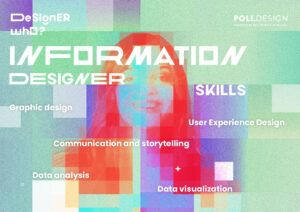
WHO THEY ARE
The role of the Information Designer is closely tied to the field of communication. Their primary task is to capture and translate complex data into graphic visualizations. Through their work, they enhance the understanding of critical information, making it accessible to both professionals and broader audiences.
#design #storytelling #data #accessibility
WHAT THEY DO
SKILLS
Graphic design, communication and storytelling, User Experience Design, data visualization, data analysis
HOW THEY WORK TODAY
Today, Information Designers primarily work in design and marketing agencies, supporting the communication and promotion of services and products. Some are also employed in media and journalism, presenting scenarios and trends to clarify research, reports, and other outputs.
HOW THEY WILL CHANGE IN FIVE YEARS
As data analysis grows in importance, new opportunities will arise for Information Designers. In the near future, they will increasingly work across diverse fields, including finance, digital healthcare, and online education.
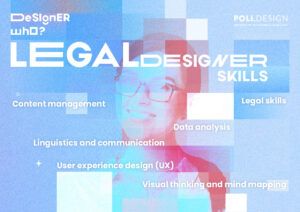
WHO THEY ARE
The Legal Designer is an emerging professional born from Stanford. They focus on designing and organizing legal content and services to make them more transparent and accessible to end users.
#design #law #informationdesign #human-centeredapproach #userexperience
WHAT THEY DO
SKILLS
Legal skills, linguistics and communication, data analysis, visual thinking and mind mapping, content management, User Experience design (UX)
HOW THEY OPERATE TODAY
Legal Designers are Graphic or Information Designers who delve into law and offer services to large corporations and firms.
HOW THEY WILL CHANGE IN FIVE YEARS
Legal Designers will work in corporations, law firms, and Public Administration to draft documents (e.g., judgments, privacy policies, contracts, regulations) and interfaces according to the principles of simplicity, clarity, UX, and accessibility.
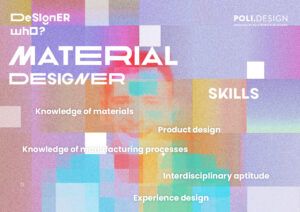
WHO THEY ARE
Material Designers play an increasingly important role in architecture and product design. These professionals develop innovative and sustainable materials, defining how to use them in products and spaces.
#design #sustainability #productionprocesses #innovation #engineering
WHAT THEY DO
SKILLS
Knowledge of materials and manufacturing processes, product design, interdisciplinary aptitude, experience design
HOW THEY OPERATE TODAY
The role of Material Designer is still relatively unfamiliar, particularly in small studios and medium-sized firms. Currently, they mainly work in the R&D departments of large companies or academic centers, driving innovation in products and spaces.
HOW THEY WILL CHANGE IN FIVE YEARS
The demand for sustainable and innovative materials is growing across various sectors. As a result, the role of the Material Designer will evolve and expand. In the coming years, they will become increasingly common in industries such as energy, healthcare, fashion, and automotive.
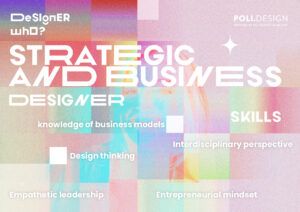
WHO THEY ARE
A Strategic and Business Designer is a professional working at the intersection of design disciplines and business management. These professionals are responsible for identifying market opportunities by leveraging tools related to user analysis and macro-trend studies, transforming them into new offering solutions and/or business models.
#businessdesign #businessinnovation #strategy
WHAT THEY DO
SKILLS
Design thinking, empathetic leadership, interdisciplinary perspective, knowledge of business models, entrepreneurial mindset
HOW THEY OPERATE TODAY
Strategic and Business Designers work in consulting agencies or large service and manufacturing companies. They operate in dedicated departments, focusing on innovation and strategic development in these organizations.
HOW THEY WILL CHANGE IN FIVE YEARS
Strategic and Business Designers will become increasingly in demand across a wide range of sectors, including high-tech industries. Their contribution will be key, for example, in introducing emerging technologies into work processes, humanizing business models, and designing user-friendly services and infrastructure for cities in the public sector.
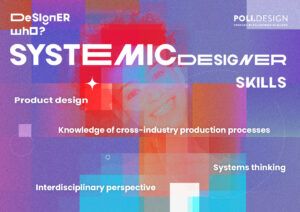
WHO THEY ARE
Systemic Designers are emerging professionals who contribute to the design of product and service supply chains. They aim to improve production processes and relationships in a sustainable and innovative way.
#design #sustainability #productionprocesses #innovation
WHAT THEY DO
SKILLS
Knowledge of cross-industry production processes, product design, interdisciplinary perspective, systems thinking
HOW THEY OPERATE TODAY
Systemic Designers are still relatively uncommon in companies. Currently, they mainly work in the R&D departments of large organizations. As consultants, they identify and suggest new business setups promoting a sustainable development.
HOW THEY WILL CHANGE IN FIVE YEARS
With the growing need to optimize production processes and reduce harmful emissions, the role of Systemic Designers is expected to gain increasing recognition. They will work in a set of industries including energy, food, fashion, and automotive.
